If you thought butter couldn’t get any better, think again! This simple yet delicious lemon thyme compound butter recipe is sure to tantalize your taste buds and elevate your dishes to the next level. Combining fresh herbs with butter creates a flavourful, creamy spread that can be used in so many ways. From topping warm toast (with cheese…) for breakfast or grilled meats for dinner. It’s an easy way to add a unique twist to all sorts of meals! And another way to use up and extend the life and enjoyment of fresh herbs.

With this recipe, you’ll learn how to make a tasty lemon thyme compound butter that will become your new favourite condiment. It sounds and even looks like some posh cooking trick and yet it is so easy to make and enjoy. Read on and discover why this bright and zesty combination should be part of your culinary arsenal!
Encouragement to make lemon thyme compound butter
Compound butter is an easy, yet delicious way to add flavour and complexity to any dish. With this recipe, the combination of zesty lemon and fragrant thyme creates a dynamite flavour that will elevate your meal experience.
• You just need a few ingredients to make this lemon herb butter quickly, with minimal effort. Plus, you can adapt the recipe to use herbs or spices that you have on hand making it extremely versatile!
• You can use this flavour-rich butter to elevate the taste and enjoyment of a wide range of dishes. The simple act of adding a dollop of lemon thyme compound butter to your finished meal can create something truly special!
It is so easy and so effective, it will be rude not to even try it!
How to create a versatile lemon herb compound butter
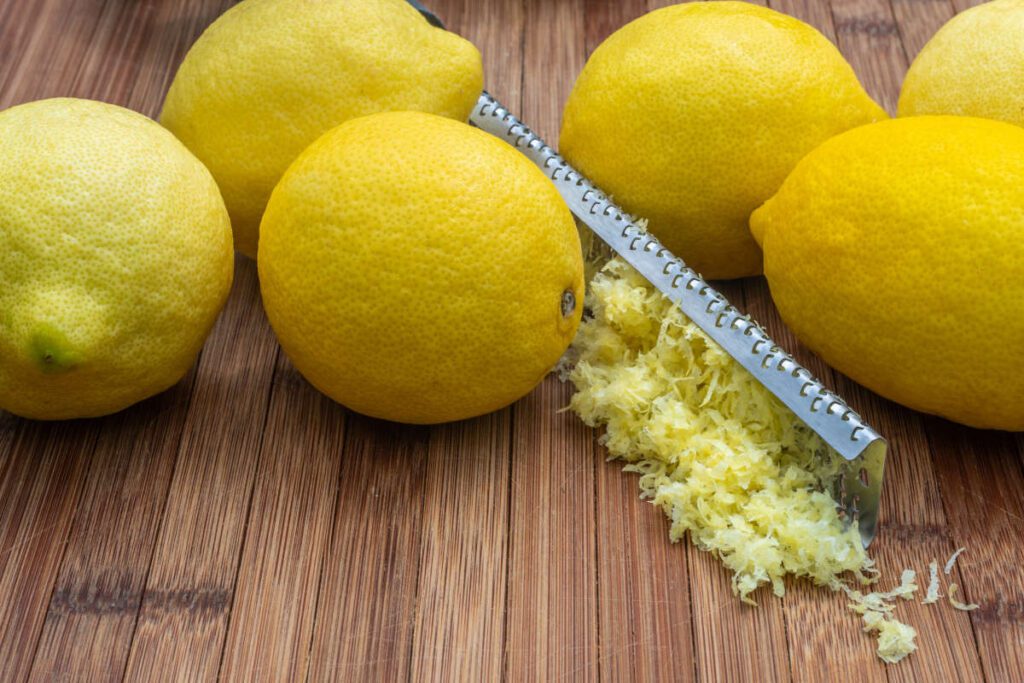
Making lemon thyme compound butter is a simple and delicious way to add flavour to many different dishes. The process starts with softening the butter to room temperature and adding the finely chopped thyme and some freshly squeezed lemon juice and zest to the butter. After stirring together, some salt can be added for additional flavour.
Finally, after mixing everything well, the butter is spooned onto greaseproof paper and rolled into a log before being refrigerated until it is firm enough to cut into slices.
You can then either use some immediately or store it in the freezer to be available for future use.
Lemon thyme compound butter can be used for flavouring meats, and vegetables, or used as a spread on toast or crackers. It’s an easy way to add freshness and bright flavours to any dish!
TIPS
1. Use softened butter for best results:
You must make sure that the butter is at room temperature before beginning. This will prevent lumps and make it easier to blend the ingredients.
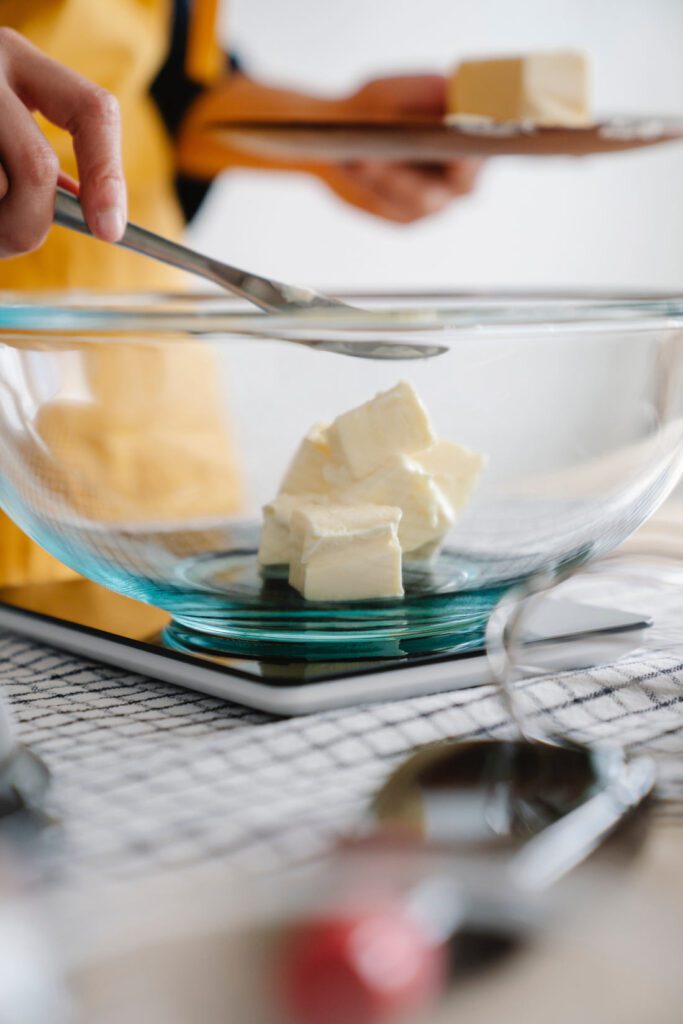
Avoid microwaving the butter as this will most likely just melt all or part of it.
I also pour some hot water into a glass, then empty the glass and stand it upside down as a dome over the weighed butter. The enclosed heat from the glass does speed up the butter-softening process.
2. Add a hint of salt:
A pinch of sea salt adds an extra layer of flavour to the compound butter that can’t be beaten! It also enhances the flavours of the star ingredients. By using unsalted butter, you can adjust how much or how little salt you use depending on your taste and needs.
3. Finely chop the herbs:
To bring out the maximum flavour, finely chop the fresh thyme leaves before adding them to your compound butter mixture. This facilitates the herb spreading through the butter. Bruising the leaves releases the flavoursome oils which are where the distinctive taste is held.
You can use fresh thyme or dried thyme in this recipe. While dried thyme is effective, if you have fresh thyme available, it does bring just a bit extra to the overall result. There is also a difference in texture between the two.
When harvesting fresh thyme, try not to cut the stem right at the base. Just gather the amount of thyme you require. Cut from stems that will leave 3-4 inches of growth behind. This will encourage fresh growth so that you can use it again and again.
To trim some thyme, you may use either secateurs or scissors.
And just for an extra twist, you could of course use lemon-thyme leaves, and adjust the lemon portion of the ingredients accordingly!
With dried thyme, use 1-2 teaspoons of the herb – or more or less depending on what you prefer. Make sure that the dried herb is not spoiled or stale ahead of use.
4. Follow a recipe for your first try:
I always find it helpful to follow a recipe when I try to make something for the first time. This serves as a useful foundation. I then make a note (on or next to the recipe) about what I would adjust or add the next time round relative to my needs, taste and need to experiment and expand on the recipe.
5. Mix thoroughly:
Blend all ingredients well. Use either a stand or hand mixer set on low speed or a comfortable spoon and bowl. Mix until the ingredients are fully incorporated and no lumps remain in the mixture. This ensures an even distribution of flavours throughout your compound butter!
6. Refrigerate promptly:
If you plan to use the butter soon, put it into an airtight container in the refrigerator immediately so that everything stays safe for eating later on!
Otherwise, portion up and place in the freezer for storage and use within 3 months(see below).
7. Freezer storage
Portion up the butter in greaseproof paper or aluminium foil in sizes that suit your needs. You could also freeze the butter in an ice-cube tray, and once frozen empty the herby butter blocks into a zip-lock freezer back for ease of storage and use.
Options for Customizing a citrus and herb Compound Butter
- Add Garlic:
For an extra punch of flavour, add some finely minced garlic, or some fine dried garlic powder to the butter.
- Spice it Up:
Once you have added all the ingredients and mixed them well, consider adding a sprinkle of cayenne pepper or chilli powder to give it some heat! Even a few turns of cracked black pepper can do the job.
- Substitute Lemon Juice:
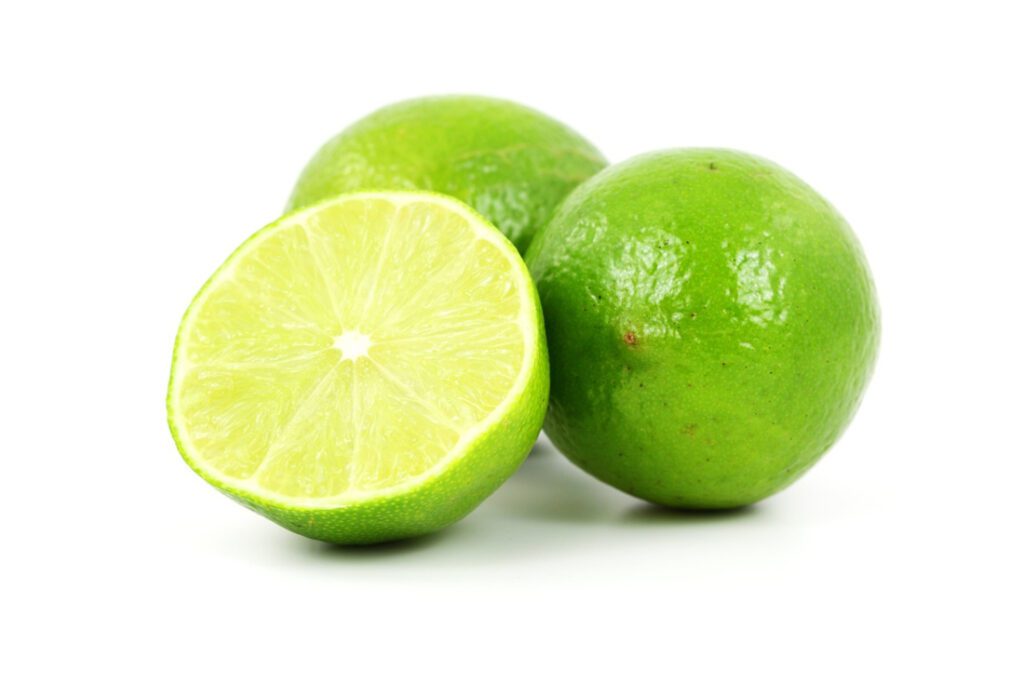
If you don’t have lemons on hand, use lime juice instead to give your compound butter a super tangy citrus twist!
- Add Maple Syrup, Honey or Agave
A teaspoon or two of maple syrup can provide just enough sweetness to cut through any overt sharpness from the lemon juice and herbs in this recipe while still maintaining its savoury profile overall.
Making the Most of Lemon Thyme Compound Butter
1. Spread on warm toast with or without cheese for an easy breakfast or snack. Serve with crackers as part of a cheeseboard. · on cornbread, dinner rolls, or homemade focaccia. You’ll keep coming back for more.
2. Add some melted lemon thyme butter to cooked pasta dishes for extra flavour and a more savoury depth of flavour. Add a slice of this butter to a baked potato, sweet potato or mash – yum!!
3. Use it as a topping for grilled vegetables like zucchini, squash, or mushrooms. Or stir through steamed mixed vegetables. Dip artichoke leaves into the melted lemon thyme butter for a meltingly delicious experience! Add to corn-on-the-cob or a dish of boiled new potatoes and transport yourself to food heaven!
4. Incorporate it into risotto or rice. Add a couple of slices of compound butter when serving and stir until all ingredients are evenly distributed throughout each grainy bite you take!
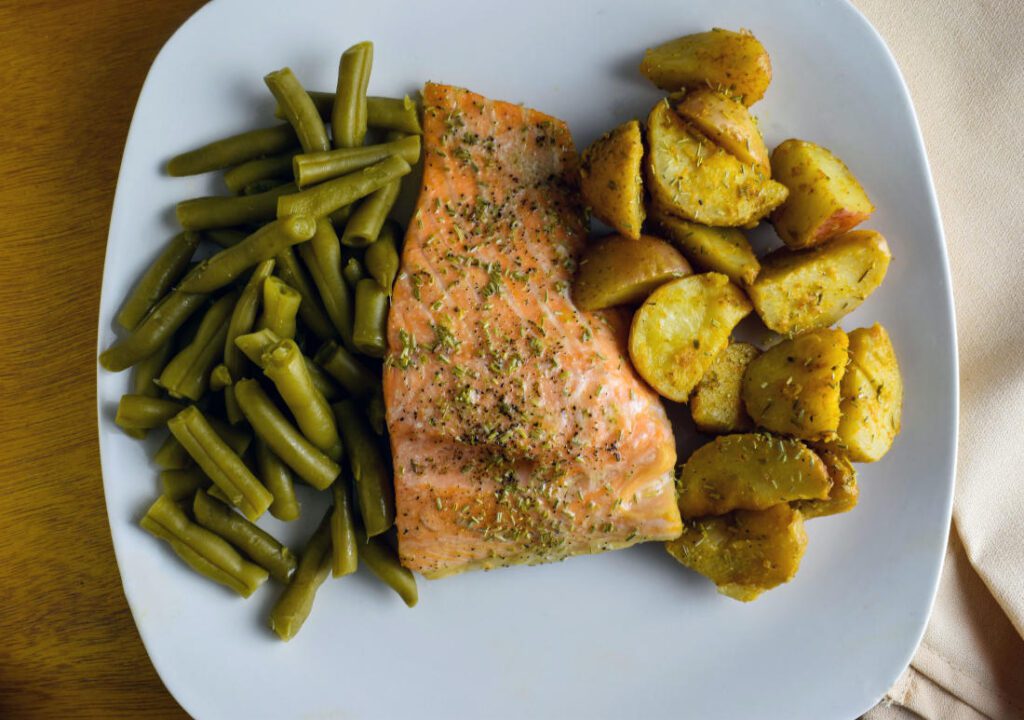
5. Melt some of the flavoured spread over grilled, baked or fried fish or meats. The addition of the melting butter and fragrant herbs is sure to be a hit among dinner guests!
Melting this butter into or over seemingly ordinary everyday dishes is like having a convenient magic sauce that can transform them into something more.
Lemon thyme compound butter is a versatile, delicious addition to any meal. Not only does it add flavour and depth, but the lemon zest gives an extra burst of bright fresh citrusy notes that perfectly complements savoury dishes.
Plus, making your compound butter is so simple – just a few ingredients and you’re done and looking like an accomplished cook! Give this recipe a try next time you want to elevate your dish with something special – you won’t regret it! Maybe make a few different kinds of compound butter at once, store them in the freezer and have a selection to choose from – go on, you can do it! As I’ve experienced, this can become a staple in your kitchen, and you will wonder how you did without it.
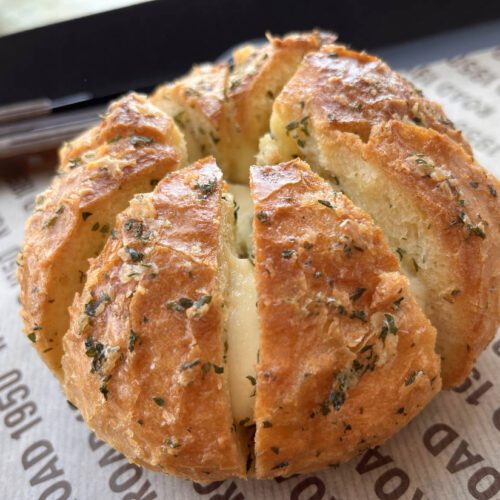
Lemon Thyme Compound Butter Recipe Equipment
Equipment
- Kitchen scales
- Chopping board and knife
- Zester or grater
- Bowl
- Spoon
- Fork
- Spatula
- Greaseproof paper or ice-cube tray
Ingredients
- 250 g butter
- 1 lemon
- 1 tbsp thyme OR 2 tbsp dried thyme
- ¼ tsp salt
Instructions
- Weigh the butter and leave it to stand to soften to room temperature. Until it is soft and spreadable.
- Wash the lemon and leave it to dry. Similarly, rinse the fresh thyme and shake well to dry and then use the fork to strip off the thyme leaves.
- Once the butter is softened, add it to your bowl. Using a fork/spoon or handheld/stand mixer, cream the butter until light and fluffy.
- Zest the lemon.
- Finely chop the thyme leaves
- Add the lemon zest, thyme leaves, and a pinch of salt (and any of the optional ingredients) to the butter.Combine all ingredients until evenly blended.
- Place a piece of greaseproof paper on a flat surface and use a spatula to dollop the compound butter onto it. Roll up the paper into a log shape and twist or tuck in both ends tightly to secure it.
- Chill in the refrigerator for at least one hour before using. The compound butter can be stored in the refrigerator for up to 2 weeks or frozen for up to 3 months.
- Make sure to label and date this mix.When using it from the freezer, either leave it to slowly thaw in the fridge overnight, or out to thaw and soften for more immediate use.
Notes
TIPS
1. Use softened butter for best results:
You must make sure that the butter is at room temperature before beginning. This will prevent lumps and make it easier to blend the ingredients. Avoid microwaving the butter as this will most likely just melt all or part of it. I also pour some hot water into a glass, then empty the glass and stand it upside down as a dome over the weighed butter. The enclosed heat from the glass does speed up the butter-softening process.2. Add a hint of salt:
A pinch of sea salt adds an extra layer of flavour to the compound butter that can’t be beaten! It also enhances the flavours of the star ingredients. By using unsalted butter, you can adjust how much or how little salt you use depending on your taste and needs.3. Finely chop the herbs:
To bring out the maximum flavour, finely chop the fresh thyme leaves before adding them to your compound butter mixture. This facilitates the herb spreading through the butter. Bruising the leaves releases the flavoursome oils which are where the distinctive taste is held. You can use fresh thyme or dried thyme in this recipe. While dried thyme is effective, if you have fresh thyme available, it does bring just a bit extra to the overall result. There is also a difference in texture between the two. When harvesting fresh thyme, try not to cut the stem right at the base. Just gather the amount of thyme you require. Cut from stems that will leave 3-4 inches of growth behind. This will encourage fresh growth so that you can use it again and again. To trim some thyme, you may use either secateurs or scissors. And just for an extra twist, you could of course use lemon-thyme leaves, and adjust the lemon portion of the ingredients accordingly! With dried thyme, use 1-2 teaspoons of the herb – or more or less depending on what you prefer. Make sure that the dried herb is not spoiled or stale ahead of use.4. Follow a recipe for your first try:
I always find it helpful to follow a recipe when I try to make something for the first time. This serves as a useful foundation. I then make a note (on or next to the recipe) about what I would adjust or add the next time round relative to my needs, taste and need to experiment and expand on the recipe.5. Mix thoroughly:
Blend all ingredients well. Use either a stand or hand mixer set on low speed or a comfortable spoon and bowl. Mix until the ingredients are fully incorporated and no lumps remain in the mixture. This ensures an even distribution of flavours throughout your compound butter!6. Refrigerate promptly:
If you plan to use the butter soon, put it into an airtight container in the refrigerator immediately so that everything stays safe for eating later on! Otherwise, portion up and place in the freezer for storage and use within 3 months(see below).7. Freezer storage
Portion up the butter in greaseproof paper or aluminium foil in sizes that suit your needs. You could also freeze the butter in an ice-cube tray, and once frozen empty the herby butter blocks into a zip-lock freezer back for ease of storage and use.Options for Customizing a Lemon Thyme Compound Butter
- Add Garlic:
- Spice it Up:
- Substitute Lemon Juice:
- Add Maple Syrup, Honey or Agave